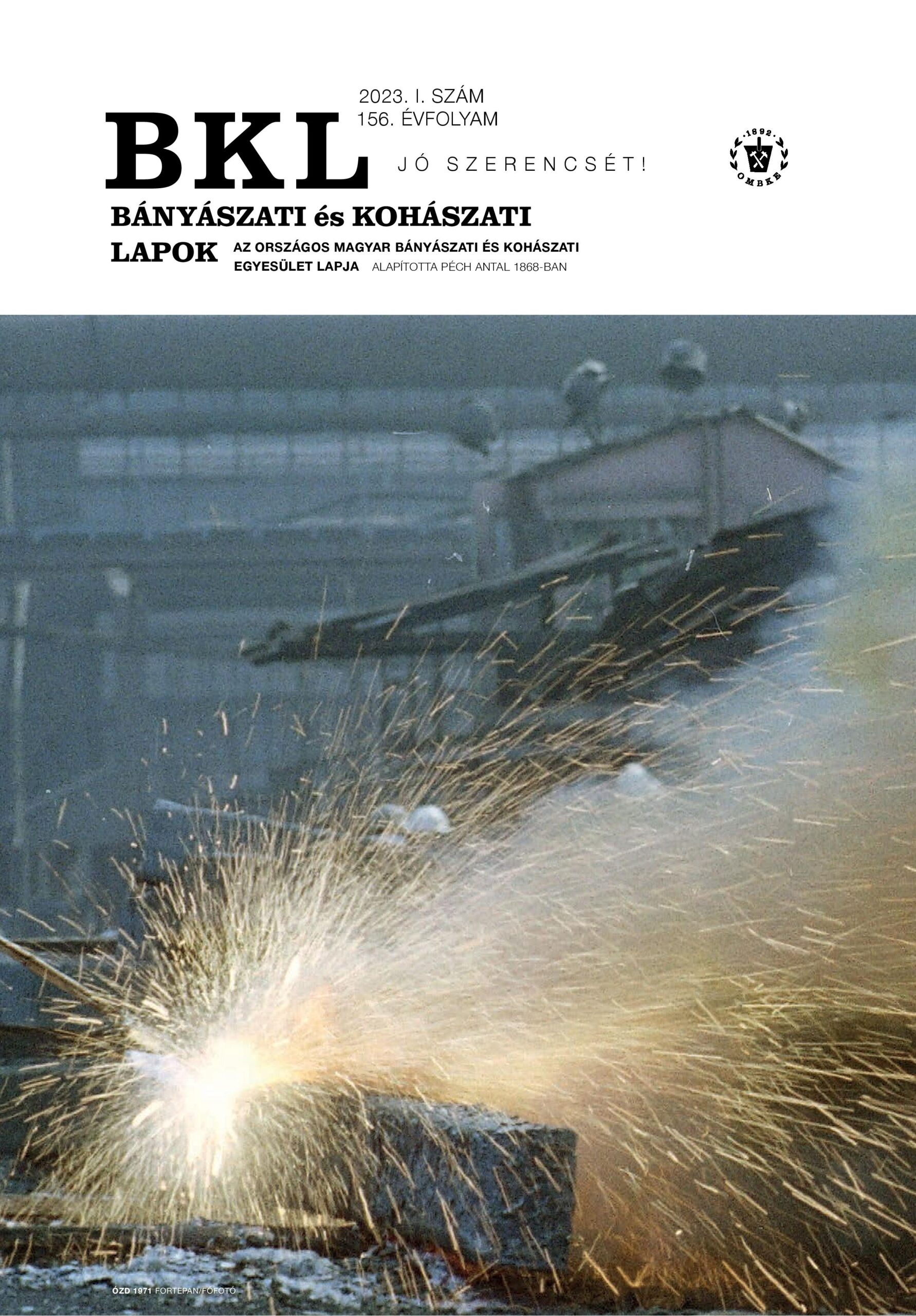Evolution of the kinetic foundations of ladle desulphurisation
Abstract
The continuous improvement in steel quality has been made possible by the thermodynamic and reaction kinetic studies carried out over the last 100 years, both in factories and in research institutes and universities. University education, trade journals, and plant and conference publications and textbooks have played a major role in the dissemination of knowledge. Of these, books are the slowest and conference publications are perhaps the fastest. Over the last 30–40 years, the slag systems used in ladle metallurgy have been studied in detail, the most important of which are the various variants of the CaO-Al2O3-SiO2 system. Among the research areas, the melting point, viscosity and sulphur distribution constants have been studied. It is clear from ternary systems the slag region with the highest sulphur distribution is not located in the area of the lowest melting point, but on the boundary between the curved line aCaO = 1 and the 100% melt to the right of it. No more CaO than this, i.e. about 60%, can dissolve in the slag. In the concentration area to the left of the saturation line, solid CaO, 3CaO·Al2O3 and 2CaO·SiO2 and melt are found in the slag system. This adverse phenomenon, which occurs in practice, is due both to the slow spread of slag science and, consequently, to inappropriate slag formation that neglects solubility. One characteristic of this harmful phenomenon in practice is the wasteful use of lime to create a high basicity, and another is the highly viscous, almost solid slag. Given that the solid CaO or Ca-silicate formed by oversaturation is desulphurisation ineff ective, such practices are characterised by low desulphurisation capacity. The previous 50 years were characterised by a strong, almost exclusive, application of thermodynamic principles in desulphurisation. In this context, useful insights have been gained into the importance of the sulphur balance, including the role of the distribution constant and the amount of slag. The study of the slag systems and the application of thermodynamic knowledge have made it possible to improve the quality and quantity of slag formation. The competition for quality required further clarification of the driving force of desulphurisation and its time course. The inclusion of reaction kinetics criteria, based on a sound thermodynamic basis, has been branching out in many directions, depending on the method of desulphurisation. The theoretical work of the last decades has clarified that from a kinetic point of view, desulphurisation consists of sub-processes such as reagent feed, diffusion, convection and chemical reaction. Of all these, the slowest step is the decisive one in terms of overall process speed. By comparing the extended conditions of desulphurisation conditions, the role of kinetic and equilibrium ranges has been clarified, i.e. it can be determined which types of desulphurisation parameters are effective or ineffective in reducing sulphur content in a given case. In recent decades, studies have focused on the determination of the rate constant of the desulphurisation process, the first step of which is to calculate the specific mixing energy (ε-point). In the practice of gas injection, the introduction of the concept of specific mixing energy has significantly contributed to the modification of the concept of the desulphurisation mechanism for plant operators, as it has gradually shifted the attention from simple interfacial reaction to film diffusion and then to steel convection. By around 2000, many plants had already developed quatitative plant desulphurisation models for their own technology, allowing the sulphur content to be monitored over time.
References
Simon S., Károly Gy. (1983): Acélkohászattan I. Tankönyvkiadó, Budapest, p 137.
Simon S., Sziklavári J., Szőke L. (1974): Újabb megoldások az acélgyártásban. Műszaki könyvkiadó, Budapest. p 80.
Szegedi J., Szabó Z. (1980): Acélgyártás II. Tankönyvkiadó, Budapest, p 57.
Károly Gy. (2013): Az acélmetallurgia alapjai Miskolci Egyetem. Elektronikus jegyzet. p 85.
Riboud P., Vasse R. (1985): Désulfuration de l'acier en poche: Synthése des résultats théoriques et industriels. Revue de Métallurgie - CIT, 1985. nov. https://doi.org/10.1051/metal/198582110801
Gaye H., Gatellier C., Riboud P. V. (1988): Physico-Chemical Aspects of the Ladle Desulphurization of Iron and Steel. In: Katz S. et al. (eds.), Foundry Processes © Plenum Press, New York. p. 333-356. https://doi.org/10.1007/978-1-4613-1013-6_12
Yu Yue et al.: Study on Desulfurization Kinetics Model of LF Refining. Advanced Materials Research (Volumes 690-693.) Study on Desulfurization Kinetics Model of LF Refining Scientifi c.Net https://doi.org/10.4028/www.scientific.net/AMR.690-693.246
Sommerville I. D., McLean A. (1988): Signals from slags. A new Approach to Flux Control for Steelmaking and Casting. In: X. Országos Nyersvasgyártó és Acélgyártó Konferencia, Siófok, 1988. szeptember 8-10. III. kötet, p. 215.
Oghuchi S., Robertson, D. G. (1984): Kinetic model for refining by submerged powder injection. Pt. 2. Bulk-phase mixing. Ironmaking & Steelmaking, 11/5, 274-282.
Conejo A. N. et al. (2007): Kinetic model of steel refining in a ladle furnace. Steel Research Int., 78/2. https://doi.org/10.1002/srin.200705871
Asai S. et al. (1983): Proceedings Scanject III, part I, ME- FOS, Lulea, Sweden, p. 12.1
Qing Cao, Laurentiu Nastac et al. (2018): Numerical investigation of desulfurization kinetics in gas-stirred ladles by a quick modeling analysis approach. Metallurgical and Materials Transactions B, 49/3, 2018 March. https://doi.org/10.1007/s11663-018-1234-7



